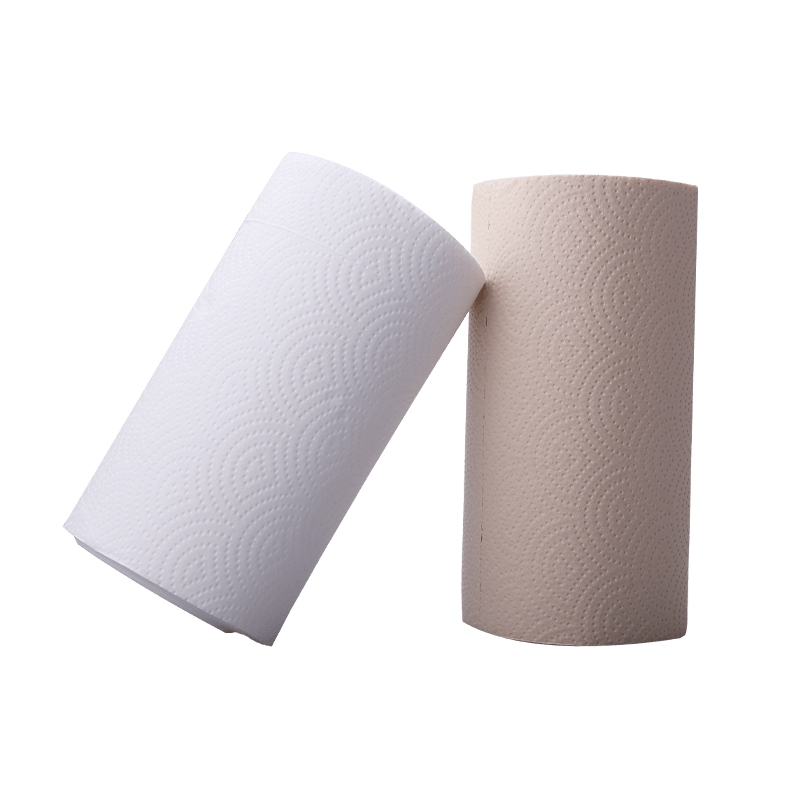Strength vs. Absorbency Innovations in Kitchen Paper Towels
Kitchen paper towels provide convenience to clean hand spit, dry hands and ensure cleanliness in kitchen. Although they appear simple, the design of paper towels is balancing two essential performance characteristics that are strength and absorbency. Recent advancements in materials, manufacturing process and design have seen kitchen paper products become stronger, absorbent and more adaptable.

The Science Behind Absorbency and Strength of Kitchen Paper Towels
Strength
One of the major issues when it comes to kitchen paper towel design is to ensure durability without cutting down on softness or user-friendliness. The majority of consumers expect their paper towels remain in good condition during difficult cleaning tasks like cleaning countertops, wiping grease-stained surfaces, or handling large spills. Innovative developments in the field of fibre technology play an important role in strengthening.
Manufacturers are increasingly utilizing long interwoven fibers, which provide strength to tensile, which allows the towel to not tear in the event of wetting. Certain premium brands incorporate multi-layered or ply structures with each layer contributing to overall durability, while retaining the flexibility. Innovative bonding techniques, such as embossing and air-through bonding aid in strengthening fibrous networks, producing towels that are able to withstand the most rigorous use without breaking.
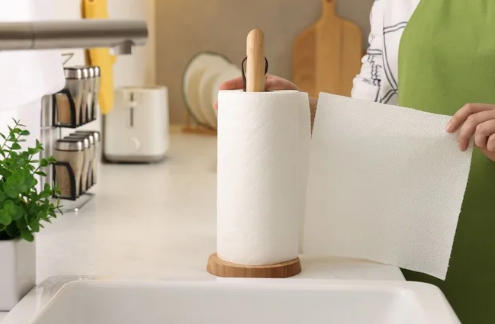
Kitchen Paper Towels
Absorbency
Although strength guarantees longevity, absorbency determines the extent to which a towel will absorb liquids. Absorbency is crucial in handling spills of large size such as oils or water-based liquids. Innovative technologies for absorbents focus on the materials employed and how the towels are constructed.
Manufacturers are testing super-absorbent and cellulose fibers that improve the retention of liquid. Surface design featuring micro-embossing patterns as well as quilted textures, increases the surface area and channelizes liquid efficiently through the layers. These new technologies let kitchen paper towels take in more liquids with less sheets, thus reducing consumption and enhancing efficiency in both residential as well as commercial environments.
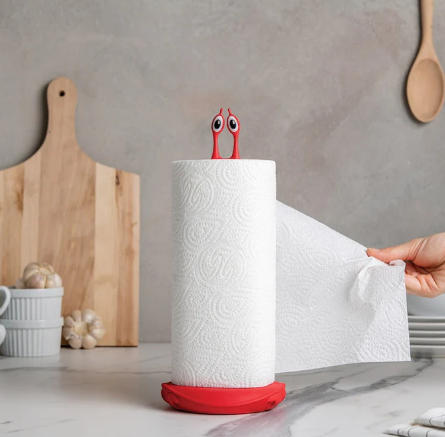
Key Innovations in Balancing Strength and Absorbency of Kitchen Paper Towels
1. Advanced Fiber Blends
One of the most significant technological advances on kitchen paper towels involves the utilization of blends made up of hybrid fibers. By combining short and long fibers of cellulose or mixing recycled fibers and virgin pulp, producers can produce towels that retain the highest tensile strength and provide superior absorption of liquids. The longer fibers are durable and tear resistance. Meanwhile, shorter fibers provide greater capillary action and enhance the absorption. This synergy lets towels function effectively in humid conditions without breaking.
2. Multi-Ply and Layered Structures
Layering is a crucial method to achieve an equilibrium between absorbency and strength. Multi-ply towels in which at least two sheets have been joined together, give structural strength which reduces the risk of tears. The inner layers can be designed to maximize liquid retention, directing spills effectively through the thickness of the towel. Certain modern designs incorporate an asymmetrical layering system, in which the outer layer is geared towards strength while the inner layer is focused on absorption to ensure optimal performance for daily tasks.
3. Embossing and Texturing Techniques
Innovative embossing patterns and textures make a crucial contribution to enhancing the strength and absorbency. The honeycomb or quilted embossing pattern increases surface area, which allows the towel to absorb more liquids in a shorter time. Additionally, embossing can strengthen the fiber network, which prevents tears that are not needed when used. By taking care when designing these patterns, producers can ensure that the towels are durable and effective in absorption of liquids.
4. Chemical and Bonding Innovations
Innovative bonding methods and selective chemical treatments have also increased the balance between strength and absorption. Wet-strength resins, air-through bonding and biodegradable glues enhance fibers, without compromising their capacity to absorb liquid. These advances enable towels to remain durable even after repeated wringing or spills, while also serving as effective absorbent material.
5. Sustainable Material Integration
Sustainability is increasingly impacting design of paper towels. New developments in eco-friendly fibers recycled content and energy-efficient manufacturing techniques are now contributing to the strength and absorbency of kitchen paper towels. For instance, certain recycled fiber treatment improves fiber bonding, increasing the durability of the material, and engineered pulp structures ensure high absorbency. Bamboo kitchen towels made from sustainable bamboo fibers also are an ideal choice. They are naturally durable, allowing users to wipe, scrub, and clean without tearing easily. At the same time, their highly absorbent structure quickly soaks up spills and liquids, making them efficient for everyday kitchen tasks. This guarantees that high-performance paper towels eco-friendly, ensuring that they are in line with the current expectations of consumers.
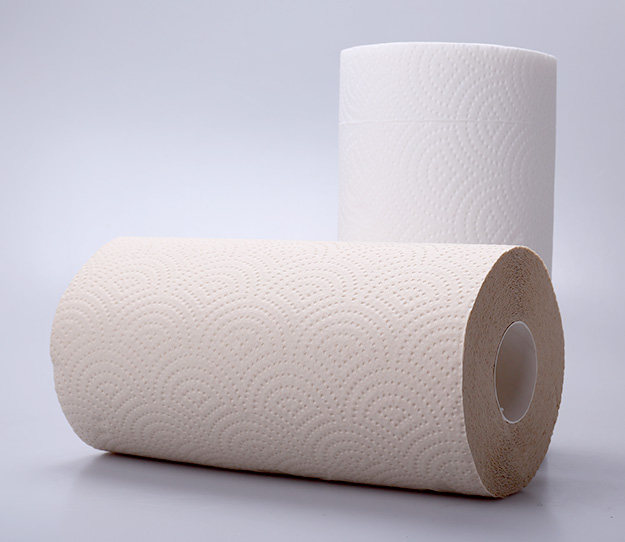
6. Microfiber and Nanotechnology Applications
New technologies like microfibers and nanomaterials provide new possibilities to increase the strength and absorbency of paper towels. Microfiber towels have better retention of liquids due to their large surface area while nanotechnology treatments can improve the bonding of fibers to ensure greater durability. These new materials represent the future of the development of kitchen paper towels providing unmatched efficiency in both household as well as industrial applications.

How to Choose Between Strength vs. Absorbency in Kitchen Paper Towels
Depending on your household or commercial needs, emphasizing one attribute over the other can make a significant difference in performance for kitchen paper towels.
1. Evaluating Your Usage Needs
The first step in selecting the appropriate towel is to take into consideration the way it will be utilized. Kitchens and households which are primarily occupied by large spills, oily surfaces or frequent scrubbing the stronger towel is generally more efficient. In contrast, if the main job is to clean up spills from liquids drying dishes, or scrubbing counters quickly absorption becomes the primary element. In most instances it is important to balance each of these attributes is ideal however, knowing which one is most important for the task at hand will help you make a selection.
2. Considering Sheet Size and Ply
The shape of the towel’s design influences how absorbency and strength are interacted with. Multi-ply towels typically offer more durability, and more thick layers can improve the retention of liquid. However, very thick towels could reduce efficiency as they need more sheets to wash the surface. Certain towels make use of a mix of plies, where the outer layers concentrate on strength, while the interior layers are focused on absorbency and provide a complete solution for everyday household use.
3. Reading Labels and Performance Indicators
Modern paper towels typically contain claims of performance on the packaging, for example “strong even when wet” or “ultra-absorbent.” Reviewing these claims with the help of customer reviews or test results from manufacturers will provide information on the performance of a towel in situations in the real world. Certain brands also offer comparable data, such as the number of milliliters that are absorbed per sheet or the tensile tests for strength, which can aid in making an informed decision.
4. Environmental and Cost Considerations
Customers may also wish to consider sustainability cost. Stronger kitchen paper towels that use less sheets for each task will reduce waste and usage and high-absorbency towels will reduce liquid or water remnants, which can speed up cleaning. Combining eco-friendliness with high performance, bamboo paper towels provide a reliable and sustainable alternative to traditional paper towels.
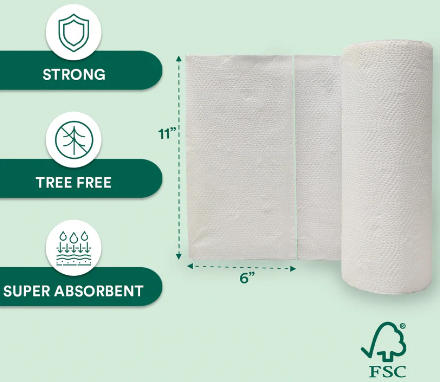
Summary
- For general kitchen use, a paper towel that balances both strength and absorbency is often sufficient.
- For specialized tasks, such as heavy scrubbing or absorbing large spills, selecting paper towels that emphasize the key performance attribute for that task improves efficiency.
Many households benefit from keeping multiple kitchen paper towel types on hand, allowing users to match strength or absorbency to specific cleaning challenges.
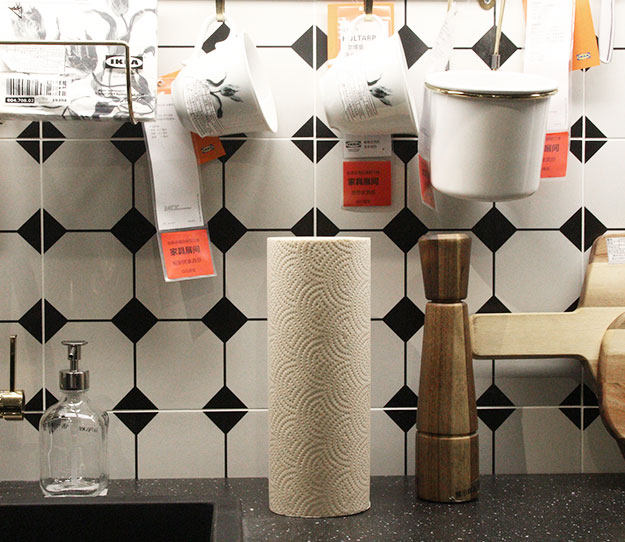
Future Trends in Strength and Absorbency of Kitchen Paper Towels
| Trend | Description | Expected Benefit |
| Smart Surface Textures & Embossing | Micro-embossing and textured patterns redirect liquids and help strengthen fibers | More efficient absorption, a greater surface area, and increased tear resistance |
| Functional Additives | Super-absorbent polymers and biodegradable strengthening agents | More liquid retention and structural strength even in wet conditions. |
| Customization & Consumer-Specific Designs | Towels designed for tough clean-up, spills that are quick or for eco-friendly use | It meets specific commercial or household cleaning requirements effectively |
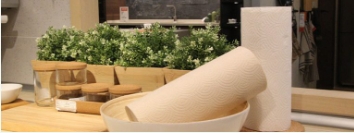
Final Thoughts
Innovations in fiber technology, layering techniques, embossing, and sustainable materials have have enabled kitchen paper towels to become more durable, more efficient, and more environmentally responsible. As paper towel production techniques continue to innovate, consumers can expect kitchen paper become stronger, more absorbent, and better suited to meet the demands of modern kitchens and commercial environments.

